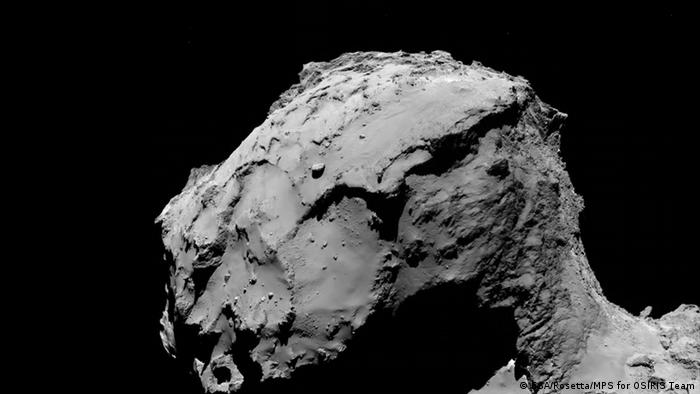EUROPEAN space Acency's ROSETTA................
- Albanian Shqip
- Amharic አማርኛ
- Arabic العربية
- Bengali বাংলা
- Bosnian B/H/S
- Bulgarian Български
- Chinese 中文
- Croatian Hrvatski
- Dari دری
- English English
- French Français
- German Deutsch
- Greek Ελληνικά
- Hausa Hausa
- Hindi हिन्दी
- Indonesian Bahasa Indonesia
NEWS
European Space Agency's Rosetta spacecraft crash lands on surface of comet
The European Space Agency has ended its Rosetta mission to a far-away comet by crash-landing the spacecraft on its surface. Rosetta, which carried the comet lander Philae, took pictures and measurements on its approach.
The Rosetta spacecraft ended last phase of its mission on Friday, softly crashing onto the comet's surface after a final spurt of data gathering.
There was loud cheering - after a long, nervous silence - as the end of the mission was announced, and Rosetta went quiet for the final time.
Hours earlier, Rosetta had fired its thrusters to make a crash landing on the surface of the rubber-duck shaped cluster of ice and rock. The 19-kilometer (12-mile) journey was plotted by ground controllers in the German city of Darmstadt, with the craft set to collide with Comet 67P/Churyumov-Gerasimenk at a speed close to walking pace.
Science instruments on board were primed to sample the composition of the halo, or coma, that surrounds the comet, while also measuring gravity, pressure and temperature.
The idea of Rosetta crash-landing on the planet was not originally envisaged, but scientists decided it would be the best use of the instruments on board. The mood at mission control was an emotional one.
Paolo Ferri, Head of Mission Operations at ESA could not hold back his sadness when speaking with DW. "It's a sad day for me, for sure. I worked 20 years on this mission. I don’t think for ESA this is a sad day - it's a very spectacular end, scientifically it's a very interesting end, and it's a clean end of the mission … But for me personally, it’s very sad."
Immediately ahead of the crash, Rosetta took pictures of the surface, with particular attention focused on mysterious pits that might yield clues about the comet's interior and how it releases gas. Instruments aboard Rosetta also confirmed a rise in gas pressure as it got closer.
Philae was deployed and landed on the comet's surface in November 2014. It was unable to fire stabilizing harpoons and bounced several times before settling, but still gathered 60 hours of on-site data.
rc/kl (AFP, AP, dpa, Reuters)




Comments